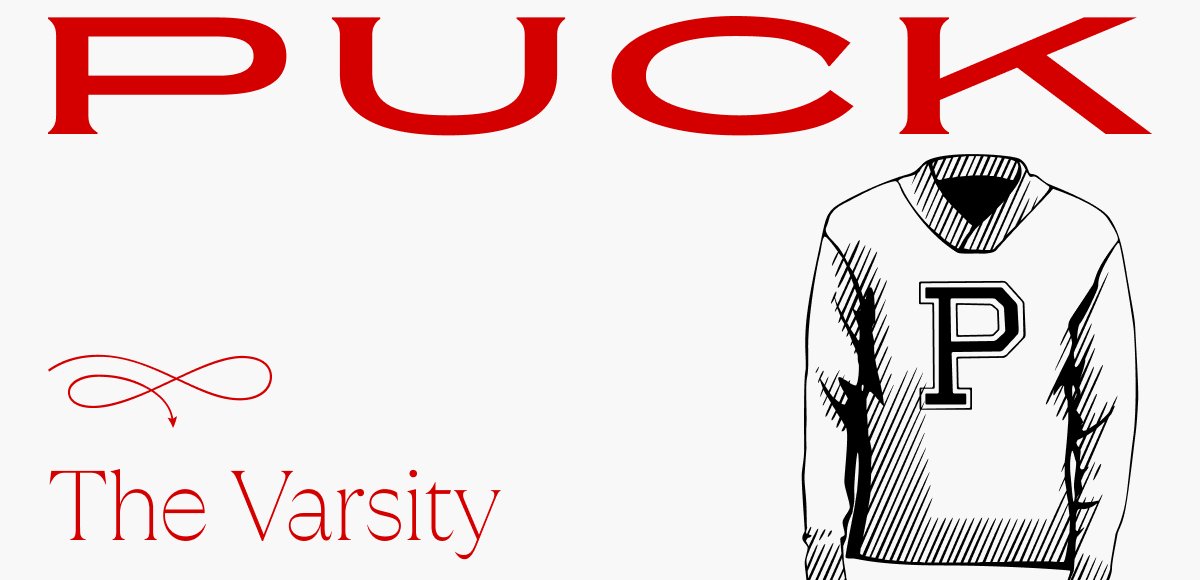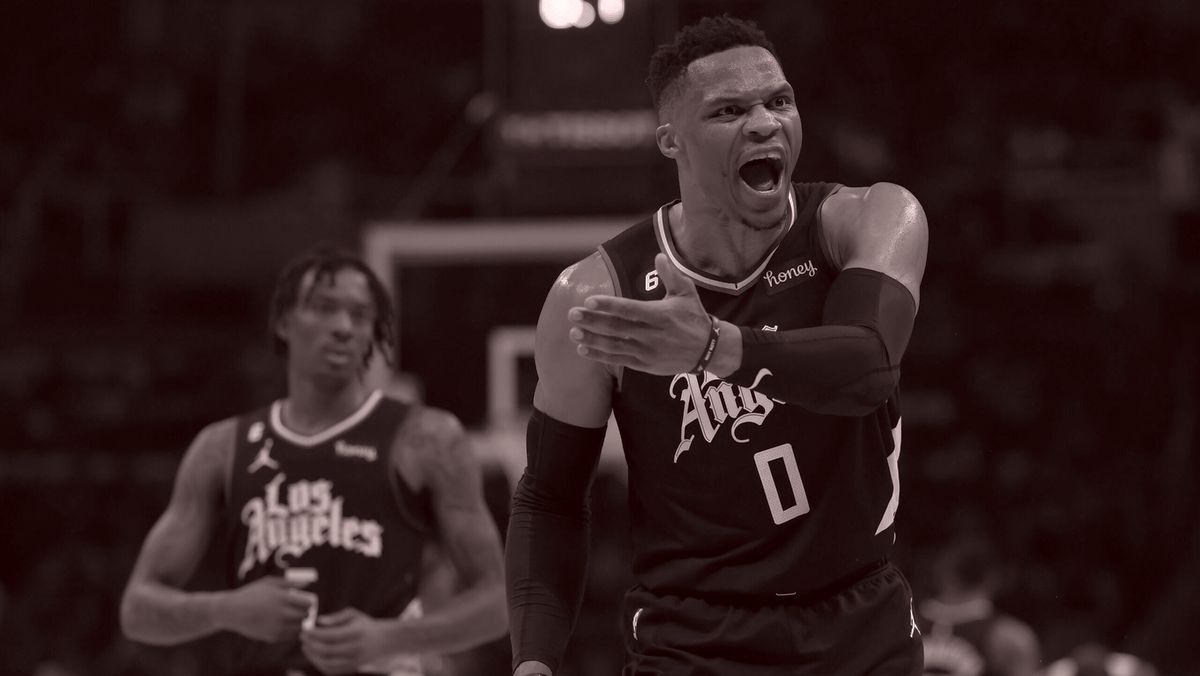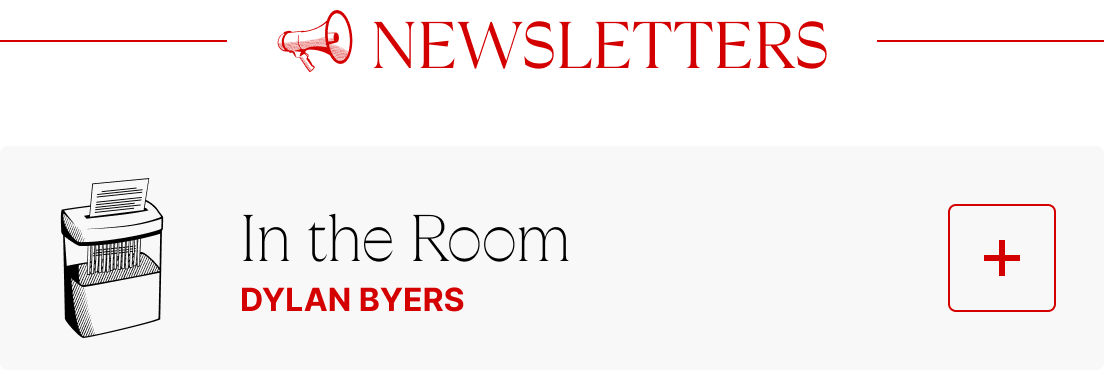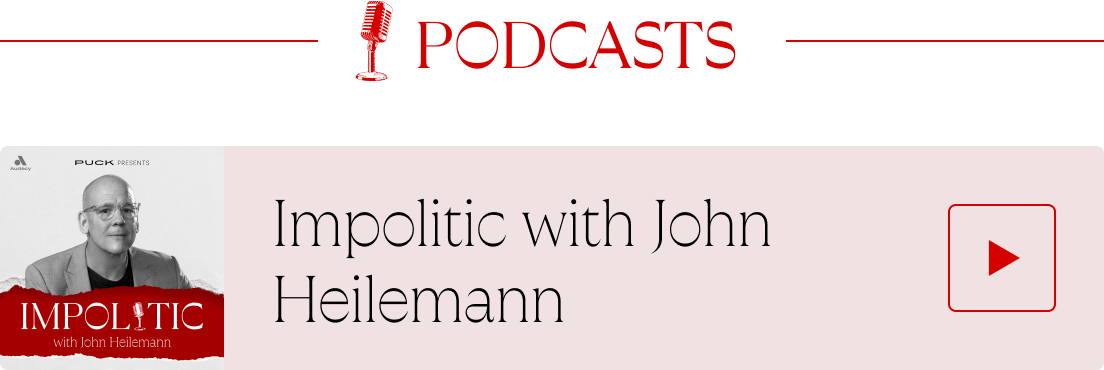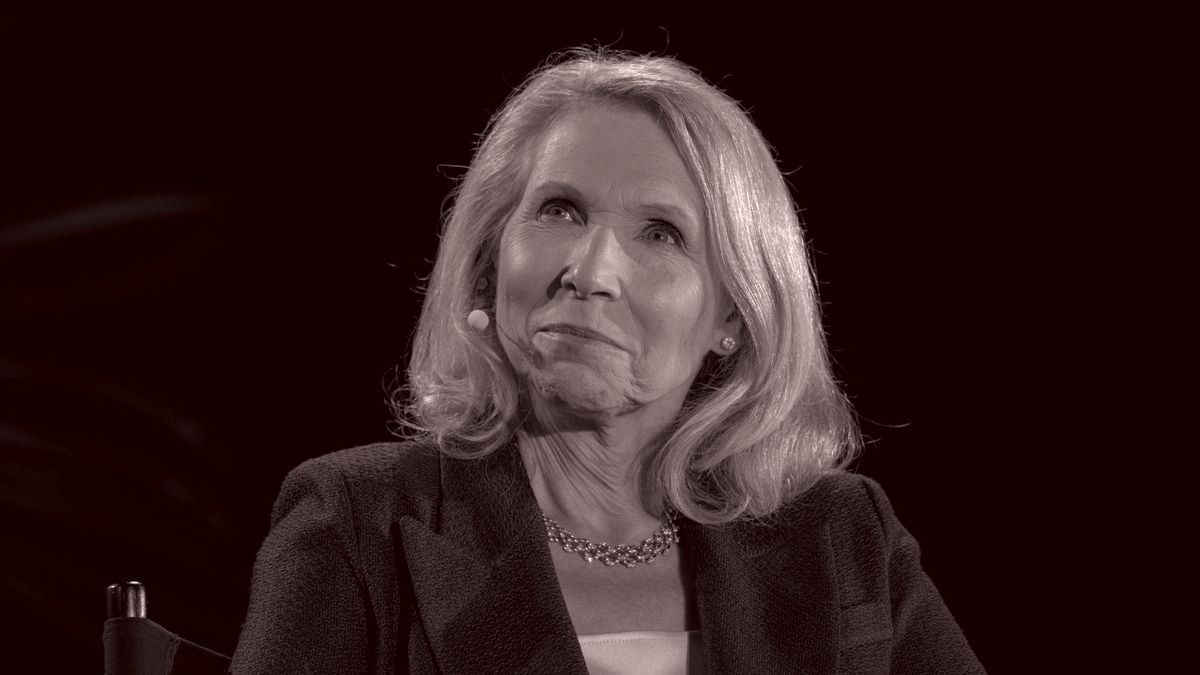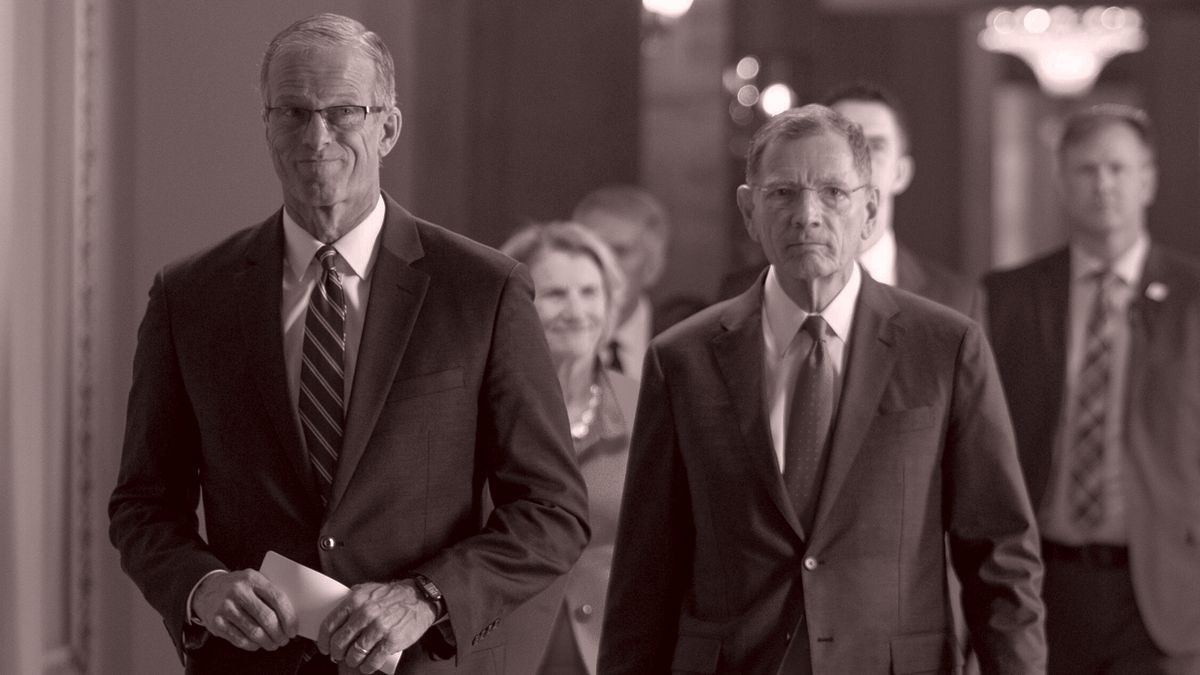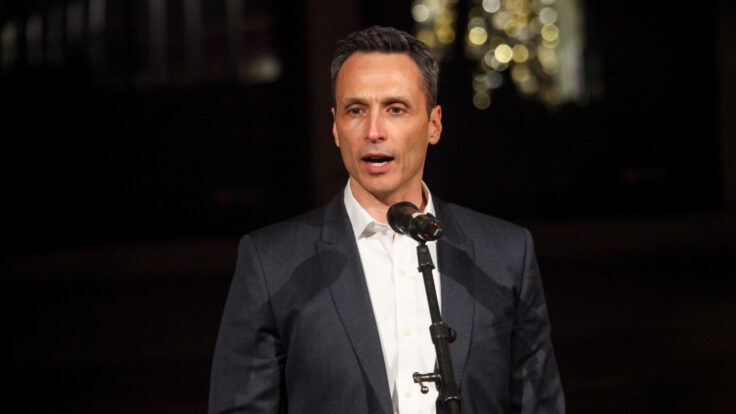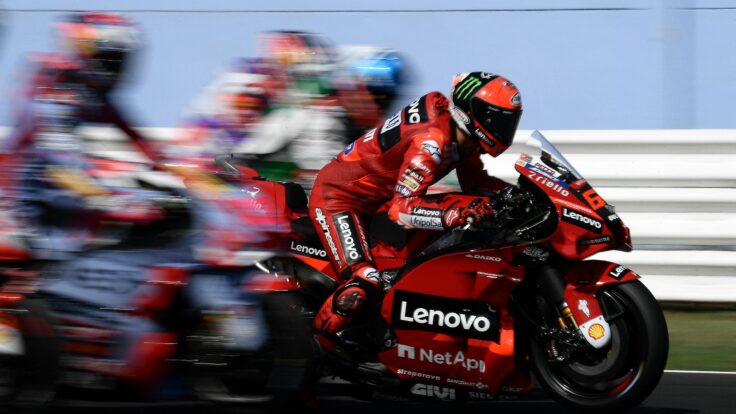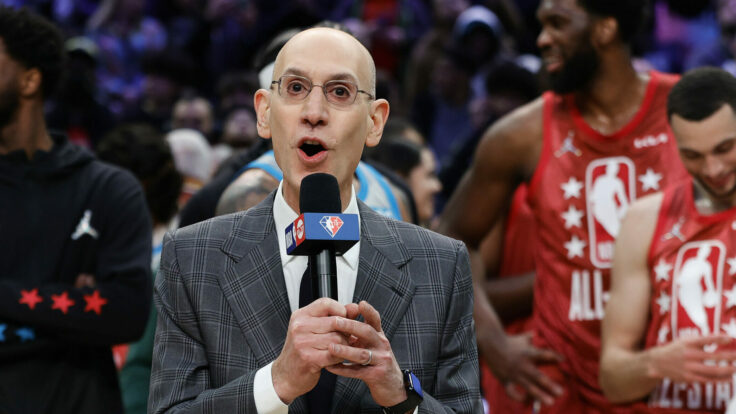Welcome back to The Varsity, our thrice-weekly email about
everything you need to know in sports media. I’m coming to you today from my old stomping grounds in London, where I’m in town for a long weekend. My itinerary includes balti houses, West End shows, ignoring Marchand’s frantic WhatsApp messages about his one-man improv show (I told you, I’m traveling!), and yes, a pint or two.
🚨 Pod alert: Words + Pictures founder Connor
Schell, one of the most accomplished nonfiction producers of our time, joins the Varsity podcast this weekend to talk about the state of the sports media market. I first got to know Connor during his time at ESPN, when he created the 30 for 30 franchise with Bill Simmons and eventually was promoted to run all content in Bristol.
Meanwhile, make sure you listen to yesterday’s pod right here to hear ESPN’s Greg Wyshynski and yours truly nerd out on the business of the NHL.
Reminder: Upgrade to Puck’s Inner Circle tier for full access to streaming savant Julia Alexander’s can’t-miss, data-driven Tuesday columns—plus a bunch of other Inner Circle–exclusive private emails from our partners. This week, Julia dug into what NBA and NFL rights will really do for Mike Cavanagh and Peacock. Click here to read the whole thing.
Now, let’s get to it…
|
Player of the Week: Shedeur Sanders
|
Yes, I know Deion’s kid dropped down to the fifth round, and wasn’t
picked until the third day of the NFL Draft—a slide that cost Shedeur millions of dollars in salary. But did you see those ratings? Almost entirely due to the Shedeur storyline, ESPN and NFL Network drew the largest day-three audience in the history of the NFL Draft. Viewership for the three-day event finished second only to the legendary 2020 Draft, live from Goodell’s basement, at the height of the pandemic. Oh… and as of Wednesday, Shedeur’s Browns jersey
was the top seller among draftees across Fanatics’ network of sites, including NFL Shop and the Browns team store. Not bad for the 144th pick. In any case, don’t feel bad for Shedeur, he’ll more than make up for it in endorsements. (See below for more Shedeurapalooza.)
|
Down to the J.V.: Roger Goodell
|
Ted Cruz, who chairs the Senate Commerce Committee, has invited executives from
the top leagues to an upcoming hearing on May 6 to discuss sports media’s migration from broadcast to streaming. Executives from MLB (Kenny Gersh), the NBA (Bill Koenig), and the NHL (David Proper) accepted the invitation. The NFL, which has had an antitrust bullseye on its back ever since the Sunday Ticket verdict, declined.
Nothing is imminent, and Senate hearings are mainly about grandstanding anyway. But note this ominous
sentence in Cruz’s letter asking Goodell to participate: “Given the unique federal statutes that apply to the NFL’s broadcasting rights, such as the Sports Broadcasting Act of 1961, the Committee is especially interested in understanding how the League balances commercial innovation and its legal responsibilities.”
That’s the question at the heart of the NFL’s antitrust exemption. The 1961 act allowed sports leagues to pool all of their teams’ broadcasting rights into
one package controlled at the league level. If the act gets wiped away, the worst-case scenario would allow each team to negotiate individual TV deals for their home games—the Cowboys would have one very rich deal and the Jaguars would be on Cheddar. The hearing is scheduled for 10 a.m., and will be streamed on the
committee’s website.
|
Down to the J.V. (Honorable Mention): Bill
Belichick
|
You know why… The Hoodie, who really does seem to be following the orders of his unofficial P.R.
advisor and social media consultant Jordon Hudson—who also happens to be his much younger girlfriend—deigned to go on CBS This Morning to reach a broad audience for his football book, The Art of Winning. Naturally, Tony Dokoupil was going to toss in a question or two about his personal life. Alas, Chapel Bill’s third act as college coach and older man is almost enough to convince you that folksy turn on Manningcast last season
was all an act. Anyway, I’m sure this era is going to end beautifully.
|
|
|

|
Julia Alexander
|
|
- Adam Silver’s dream of world domination: In February, the NHL struck gold with its new 4 Nations Face-Off: The tournament’s final game drew the largest TV audience ever for a (non-Olympic) hockey game—9.3 million viewers. According to Google Trends, global search interest in the NHL has risen steadily ever since.
Unsurprisingly, NBA commissioner Adam Silver appears to be taking notes as his league angles for its own international-themed tournament.
Silver, of course, tried to create an event with the NBA Cup midseason tournament, which didn’t quite hit despite a slew of gimmicks—the cash bonus, the courtscapes, etcetera. Meanwhile, Silver has been
huddling with Andreas Zagklis, secretary general of the International Basketball Federation (FIBA), with the goal of creating a new professional league in Europe. Silver also spoke earlier this week about reimagining the NBA All Star Game, a tentpole desperately in need of reinvention, telling The
Athletic’s Joe Vardon, “We’re discussing concepts with the players’ association that focus on NBA players representing their countries or regions instead of the more traditional formats that we’ve used in the past.” With the NBA regular season ratings down slightly year over year, but playoff ratings up 13 percent over last year on ESPN alone, this is the right time for experimentation.
- Shedeur’s win for
ESPN: I know, I know—you’re sick of hearing about the Browns’ new high-profile backup quarterback. But let me add a few observations on top of what John noted above. Yes, Sanders’ tumble down the draft board kept people glued to their TV sets—ESPN drew a near record 13.6 million viewers for the first round last Thursday, 7.4 million for the second and third rounds on Friday, and a record 4.3 million viewers on day three—when Shedeur’s name was finally called. But
ESPN also had a winner in Mel Kiper Jr., whose near-constant umbrage at teams for passing on Sanders, and his heated exchanges with fellow analysts, kept the broadcast entertaining. Given its recent Pat McAfee and Stephen A. Smith headaches, I know that ESPN isn’t interested in more drama. But its audience is sending a clear signal that they want their sports with a layer of attitude.
- The
streaming-first revolution is here: I just got around to reading the new Hub Report analysis on the sports media landscape, and one particular number jumped out at me: 69 percent of those surveyed said they preferred streaming apps over cable or broadcast when looking for sports content, an 8 percentage point
increase since 2024. Furthermore, 30 percent of U.S. respondents said they go to streaming services first to find a game, a 7 point jump from last year. These incremental upticks represent a sea change in U.S. audience behavior, but they shouldn’t be a surprise. Hollywood has been making the best non-sports programming for streaming for years. Why would audiences look elsewhere for sports?
|
|
|
- Will Trump tackle the Rooney Rule?: My Puck partner Eriq Gardner had an interesting observation in Tuesday’s must-read What I’m Hearing+ email, suggesting that Trump is greasing the skids to go after the NFL for perceived D.E.I. offenses. I’ll let Eriq take it from here… “Commissioner Roger
Goodell should pay attention to the president’s ongoing war against Big Law. Not every firm folded. Perkins Coie, Jenner & Block, Susman Godfrey, and WilmerHale pushed back, filing lawsuits after being targeted for their affiliations with Trump’s perceived enemies. Buried within these cases, past all the noise about Trump’s vendettas and retaliatory tactics, was a deeper legal fight over whether the administration can investigate diversity-promoting practices like the Rooney
Rule.”
Eriq continued: “The legal community’s Mansfield Rule—which requires law firms to interview diverse candidates, report data, and submit to annual certification—was explicitly modeled on the NFL’s playbook. Trump’s D.O.J. lawyers are arguing that the Mansfield Rule, which has led firms to hire and promote significantly more women and attorneys of color, is enough to justify federal scrutiny and even to disqualify firms from government contracts. Whether courts agree will have huge
implications—not just for law firms, but potentially for the NFL and any company sensitive to diversity in hiring decisions.”
- An NHL red flag: The NHL’s TV ratings are thus far down for the playoffs, mainly due to the preponderance of Canadian teams in the field. But the league is nevertheless having a moment right now—the recent Rogers deal, the 4 Nations event, the Ovechkin record, etcetera. Perhaps more consequentially, the
league is expecting to announce a new labor deal that should preclude any of the drama that attends collective bargaining agreement talks in other leagues.
Given all the good vibes around the league, I asked ESPN hockey analyst Greg Wyshynski to identify any insidious challenges during our chat on the Varsity podcast. “When we talk about
the tanking economy, will it take out the NFL? No. Will it take out the NBA? In some markets, maybe, but ultimately no. But the NHL has always been a gate-driven league,” Wyshynski said. “When you are relying on fans paying for tickets each season—and those tickets are not cheap in any market, really, right now—it is contingent on those fans continuing to buy tickets. That funds the league and creates these revenue streams.”
|
|
|
Like other league-owned channels, the 26-year-old NBA TV was ravaged by
cord-cutting, and left with little bargaining power in a bundled and streaming world. Now, without any exclusive games of its own, its future is a mystery.
|
|
|
The Celtics’ decisive 31-point win over the Magic on Tuesday night marked the end
of a sports media era, and I’m not talking about the Banchero–Suggs–Franz Little Three. Instead, it will go down as NBA TV’s final live playoff game, and maybe even the last exclusive NBA game to ever appear on the cable channel. So far, the NBA’s head honchos haven’t set a schedule, developed a plan, or even assigned a budget for the network next year.
The channel isn’t shuttering entirely—it will be around next season to carry some games side-by-side with regional sports networks. But NBA TV, which launched in 1999 as NBA.com, is obviously suffering the same fate as R.S.N.s and channels owned by other leagues, which have seen distribution fall at much faster rates than sports channels like ESPN or FS1. A decade ago, MLB Network was in more than 70 million homes, and now beams into just 28.7 million. NFL Network,
meanwhile, is in 46.7 million homes, but that’s a far cry from FS1 (63.1 million homes), ESPN (62.7 million homes), and TNT and TBS (61.5 million homes apiece). Right now, NBA TV is beamed into just 33.3 million homes, according to Nielsen’s latest estimates, down from its peak of 61 million 12 years ago.
Two decades ago, the leagues launched these channels as a hedge against ESPN and the broadcast
networks—and as a way to have at least one more bidder for their rights, even if that bidder was coming from inside the house. (If the broadcast networks tried to play hardball over rights fees, the leagues could, in theory, always fall back on their own channels to air the games.) In the good old days, the league networks relied on traditional cable growth tactics. They browbeat distributors into carrying their networks by putting a few exclusive games on their channels each
season. But that wasn’t enough to surmount their insufficient leverage: They were still independent channels negotiating on their own. As fans began to cut the cord, league channels had no sibling networks—e.g., ESPN is protected by Disney’s other offerings; FS1 is tied to the Fox broadcast channel and Fox News; TBS is one of a family of cable networks, too—to slow the rate of decline. There’s a reason why the NFL has been trying to sell its media assets, including NFL Network.
Anyway, the speed with which the league-owned networks lost subscribers is astonishing. Before Tuesday’s games, NBA TV was averaging just 545,000 viewers for its playoff games—peanuts compared to the 6.7 million viewers that the playoffs have averaged on ABC.
|
Compounding NBA TV’s decline is the fact that Warner Bros. Discovery will soon be
out of the NBA rights business, at least sorta. Starting this fall, as readers of this newsletter are well aware, NBA games will be broadcast on ESPN, NBC, and Amazon Prime—marking an unsentimental end to the multidecade “NBA on TNT” era. But WBD will continue to operate the NBA’s digital products, as it has since 2008, which includes NBA TV—and it will move that channel’s production from New Jersey to Atlanta, next to the Inside the NBA studio.
Last November, of course,
the NBA and WBD signed an 11-year production deal that, in part, called for “a reimagined and enhanced NBA Digital partnership between the NBA and TNT Sports.” The problem, as you might surmise, is that nobody seems to know what that reimagined and enhanced partnership means. TNT Sports recently sent the league a proposal about what the channel would look like, but its executives haven’t heard back. NBA sources, meanwhile, say they still don’t have a plan for the channel.
Sources on all sides agree that the network isn’t going dark, but its on-air programming will be scaled back. Right now, the only thing executives know for certain is that the halcyon days of NBA TV (and the other league channels) are not coming back. In fact, in some ways, the enigma around NBA TV is a fitting metaphor for an era in media that keeps moving inexorably toward its end, but often takes uncertain paths.
|
On NFL Draft rights: “Why wouldn’t ESPN bid for the streaming rights
YouTube is considering?” —A Varsity subscriber
[Ed. note: The streaming package includes international rights, as well.]
On cutting the cord: “Why don’t media executives in major markets buy a flat digital antenna to bring in the broadcast channels for free? They’re simple to
connect. It’s not perfect, but the picture is generally excellent, and you see plays before people on cable, due to the delay in delivering the signal over pipes. I’ve never understood why more people don’t do this and get a skinny bundle from something like Sling TV. It has limitations, but it does work.” —A Varsity subscriber who’s bringing the ruckus
On my description of Bill Belichick’s girlfriend, Jordon Hudson: “Inamorata? NFW you wrote
that word on your own…” —A journalist
|
|
|
Ace media reporter Dylan Byers brings readers into the C-suite as he chronicles the biggest stories in the industry:
the future of cable news in the streaming era, the transformation of legacy publishers, the tech giants remaking the market, and all the egos involved.
|
|
|
Join Puck’s chief political columnist, John Heilemann, as he roams the corridors of power and influence in America on
this twice-weekly interview show, taking you beyond the headlines with the people who shape our culture: icons and up-and-comers, incumbents and insurgents, moguls and machers in the overlapping worlds of politics, entertainment, tech, business, sports, media, and beyond. The conversations are rich and revealing, unrehearsed and unexpected… and reliably impolitic. A Puck-Audacy joint, new episodes drop every Wednesday and Friday.
|
|
|
Need help? Review our FAQ page or contact us for assistance. For brand partnerships, email ads@puck.news.
You received this email because you signed up to receive emails from Puck, or as part of your Puck account associated with . To stop receiving this newsletter and/or manage all your email preferences, click here.
|
Puck is published by Heat Media LLC. 107 Greenwich St, New York, NY 10006
|
|
|
|
